For anyone that has been running in the Alps this year, you will know what a crazy year of extreme weather it has been! We saw vast amounts of snow up high towards the end of spring, followed by torrential rain and flooding in June. Then, wildly, we swung back to baking hot temperatures in the last week of August, only to be given whiplash by snow storms the following week.
Clearly this is not just a European phenomenon but one we are seeing the world over as climate change and more extreme weather impacts our day to day lives and even trail running events. Here are my key takeaways to stay safe and plan for extreme weather impacting your race day.
Last month

A month ago, I was lined up on the start of the UTMB Wildstrubel 50. This however would turn out to be one of the stranger races I’ve run. Strange, because in the last 10 hours, the start time, course and distance had already been changed, even more strange, the course had changed again within 10 minutes of the race starting, and I had no idea!
2024 – A year of extremes
2024 has seen extreme weather, and extreme weather in the mountains is amplified, and with it the risks for participants and organisers. Persistent rain has dramatic effects on the landscape below the lofty peaks, giving way to landslides, rock fall and swollen rivers as everything gets funnelled into the steep valleys below. What’s also changing is the suddenness of this extreme weather and the challenge for it to be forecast.
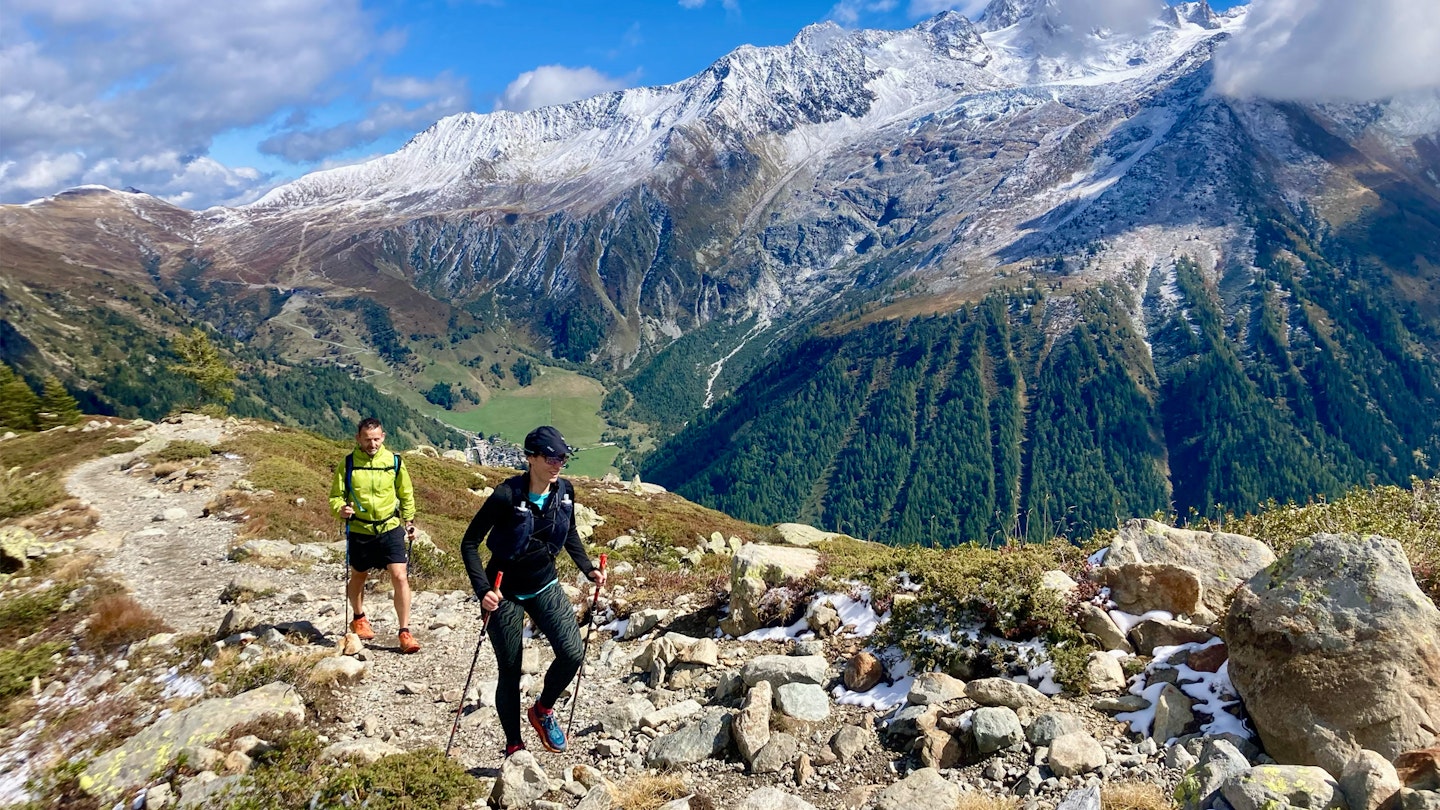
From the very start of the race and event season, something didn’t feel right. Early June races faced cold weather and persistent rain. When it cleared a Foehn wind took its place and blocked out the sky as sands from the Sahara were blown up over the Alps. Local races, with their steep ups and downs, found themselves watching runners start in cloud, and finishers covered in mud at the end. My own Bernex Trail Race was essentially 1.5km vertical slip and slide back to the start and when you realise that most descent routes run next to sheer drops and consequential ground, slipping is not an option.
Disaster
Then, sadly in mid-June the Ultra-Trail du Haut Giffre, hosted just north of Mont Blanc in Samoens saw one runner die and three others seriously injured after taking falls in bad weather. No one expects to lose their life when they enter a race and this tragedy sent a shockwave out amongst the running community and of course race organisers. This reminded many of the Gansu tragedy of 2021 which saw 21 runners perish in China due to extreme weather.

A few weeks later, the UTMB Verbier Series at the beginning of July suffered severe storms. The organisers fearing another disaster, cancelled some races, changed start times as well as course routes. They did this alongside activating cold weather kit requirements which at the last minute included micro spikes! Fast forward to UTMB Chamonix and it was the opposite as hot weather kit was imposed. Just two weeks later and it was the UTMB Wildstrubel Series.
Weather
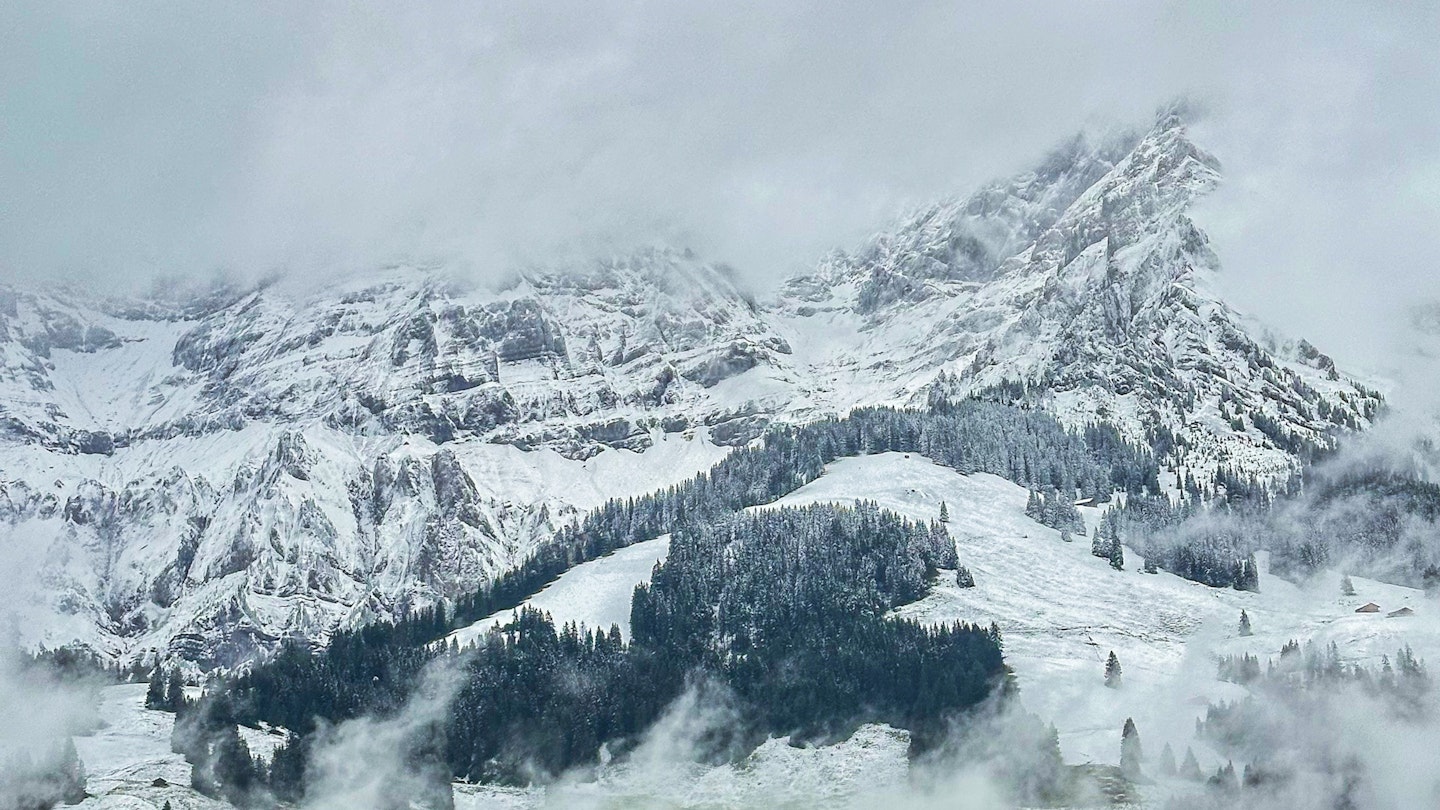
As an alpine running guide, I am obsessed with the weather, it creates the baseline for my risk assessment of where and what is possible to do safely. There are some conditions that cause me to stop in my tracks. These are hail, high winds, sudden torrential rain, snow which is combined with extreme cold / or high winds and lightning. Any one of those weather patterns can cause serious risk to life, either through their immediate impact on my clients and me, or via the surrounding terrain. In non-mountainous areas, I’m less concerned about hail or torrential rain, let’s face it, it rains most days in the UK! Weather doesn’t occur in isolation, its context is the terrain, the location, remoteness, a mountain’s ability to create its own weather pattern, the speed of weather changes, and options to get shelter.
Adapting
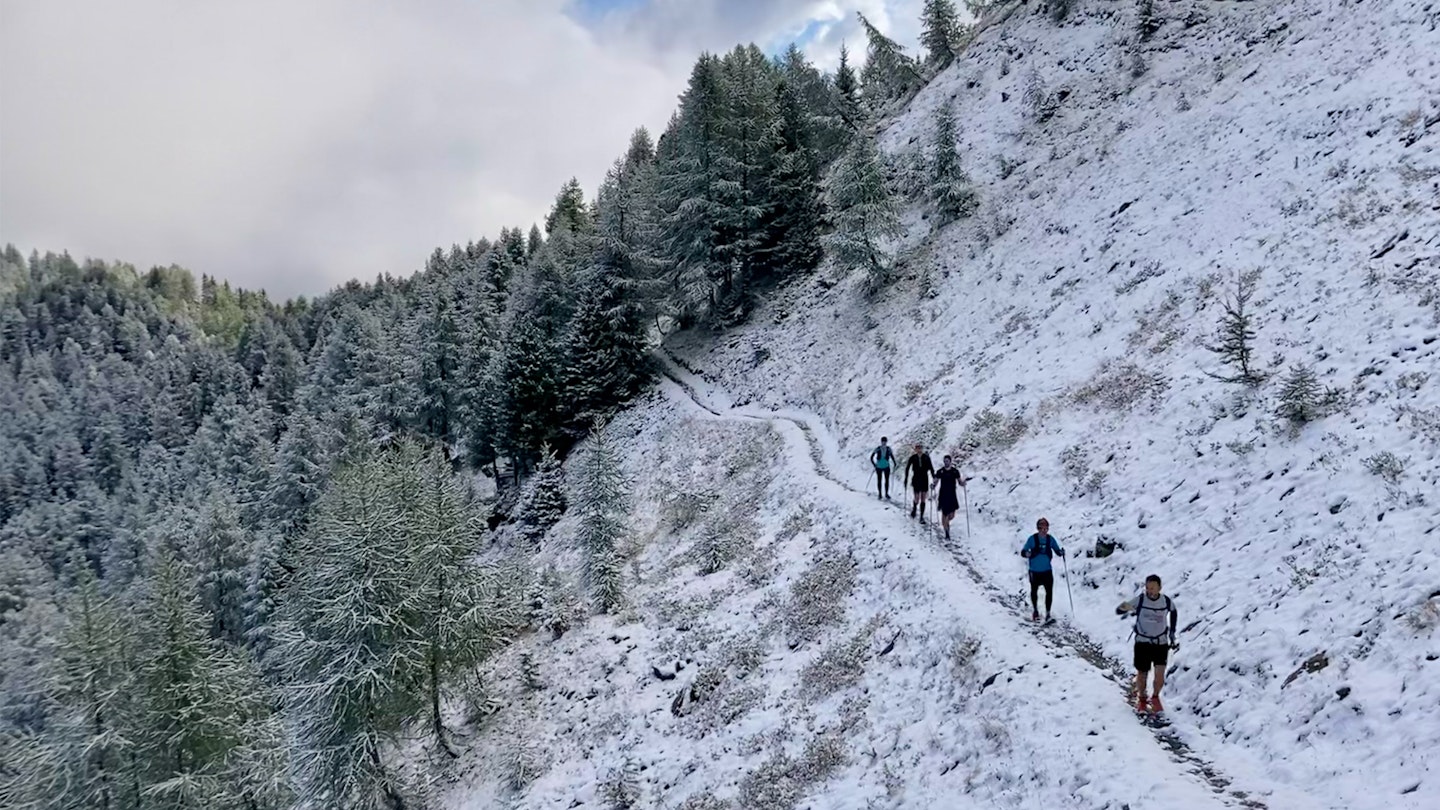
Alfred Wainwright famously wrote ‘there is no such thing as bad weather, only unsuitable clothing’. Some places, no matter how well dressed you are, you should not be. However, it is a really important point. The weather tells us what we need to wear. It also tells us to take more care, more care of how we move and where we go.
Rocks and soil are much more slippery when wet and what could be an easy mountain path in the warm sunshine, becomes an epic day out of self-discovery in wind and rain. What we need to do more than ever, is adapt our plans and preparation according to the terrain and weather. More event organisers are creating cold and hot weather kit requirements, as well as making amendments to routes, start times, start locations and even cancelling events as they adapt to climate change, whilst doing their best to run a safe event.
Wildstrubel 50 – the race
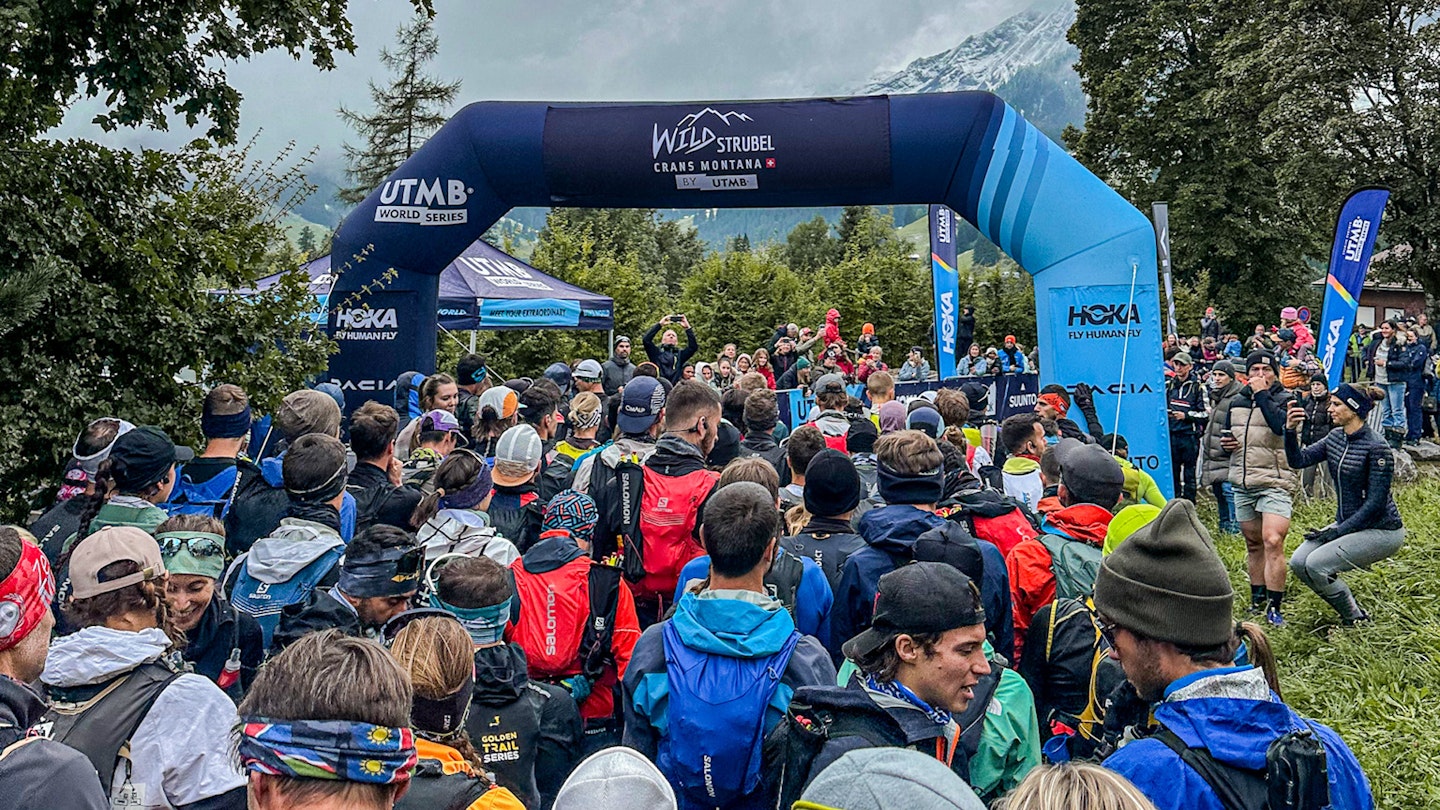
Back to the race… Having grabbed my race bib 8 minutes before we were due to start, I rushed to the start line. I made my way through the crowd trying to get near to the front as possible. The previous day I’d just finished guiding our 100-mile Tour du Mont Blanc and had been relieved that the start had been delayed to 10.30am from the original 8am. Adelboden, Switzerland is a 3.5-hour drive from our home in Saint Gervais and the extra few hours of sleep were precious. All this, because of the snow fall and high winds overnight. I knew this, as we’d experienced some of it on the trail coming down into Chamonix the previous day.
I stood there in my La Sportiva Uragano GTX’s and had a quick look at what those around me were wearing. This was going to be interesting. I’d heard from racers the previous day that it was a mud bath on the lower slopes and from the reports lots of snow up high. I barely had time to start my watch, we were off. I knew I had to run my own race, I was tired, had a 100 mile and 10,000m week of tapering, but then again, I’d a whole season of mountain running in me, which I hoped would help. The race was fast, worryingly so, I reminded myself it was 52km and that given the conditions it would be tough.
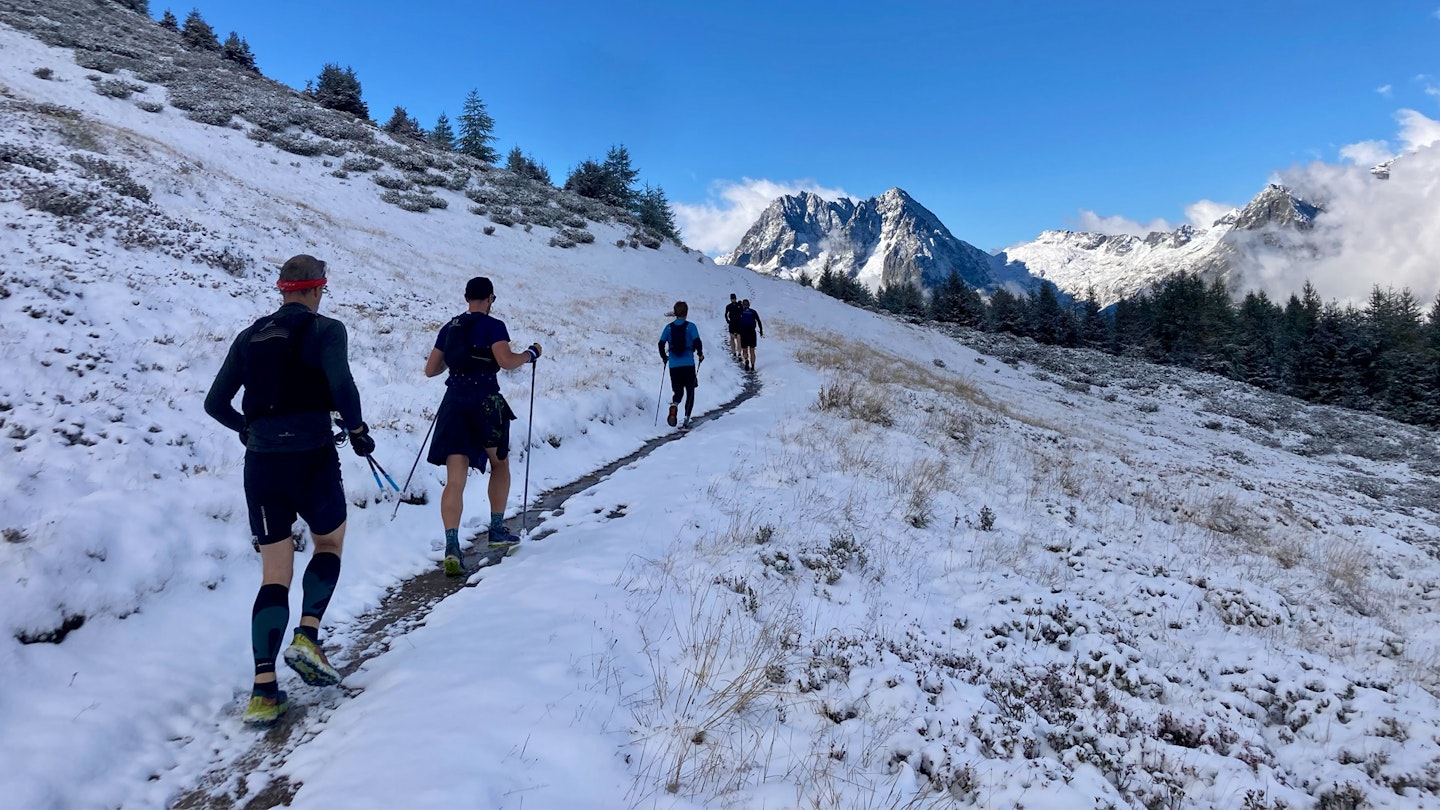
After several km on the road, we hit the trail, and it was muddy. The mud became snow, which became deep snow. I love snow, I don’t think you ever lose that if you grew up in the UK. I passed several runners as I realised my shoe choice, although heavy, was the right one. Stepping accidentally off the trail, I found myself stuck in waist deep snow. I hauled myself back on the beaten path with my running poles. For the next few kilometres, I ran with another runner on a high snowy traverse. It was a complete white out and you had to feel the ground, snow with your feet, we saw no one else. It was tricky to navigate as the wands were buried, the route on my watch prompted turns as he ran in front, diving into the snow every so often, to my amusement.
Descending into Lenk, the first supporter checkpoint, the snow gave away to mud. My shoes held the ground well and as I corned on the path, I heard some swooshes behind me as others followed unwisely. The descent was technical and super muddy, it was essentially fell running, which is unusual in the Alps, but a lot of fun. Lenk was a lush green valley below the high mountain tops which were now starting to sparkle in sunshine but this was all a distraction to my focussed state of keeping upright!
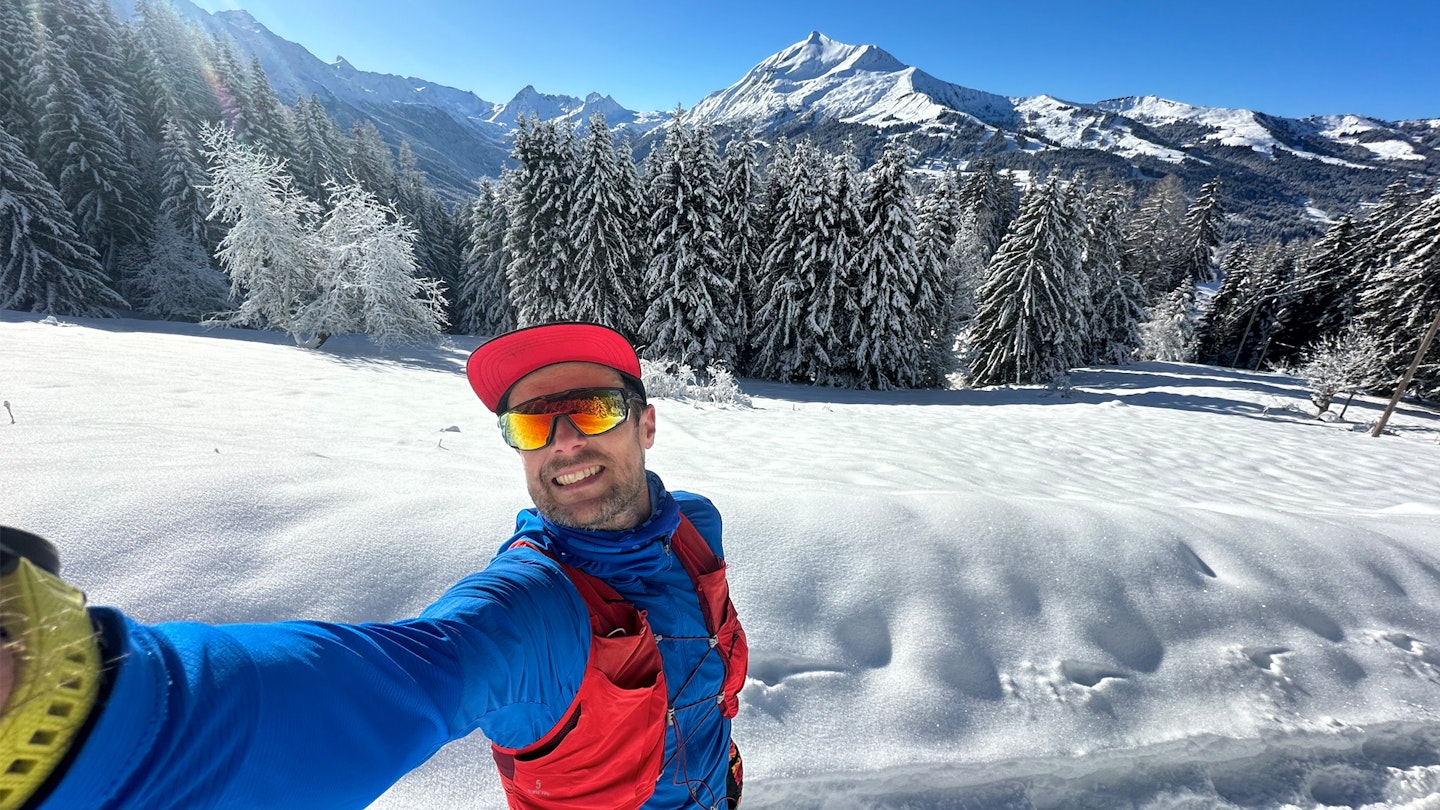
I ran into the checkpoint, feeling pleased to have survived and quite clean compared to my competitors. Karin (usually I am support crew) whom I had not expected to see, shouted that it’s an 8km out and back, that the route had been cut short and changed due to the conditions, the finish would be in Lenk. That’s good and bad, I need to up my gear, seriously, I’d been taking it way too easy but suddenly my day was also a lot shorter! I changed my route mid run on the watch, now I could track myself again. I ran out of that checkpoint as fast as I could go to that 8km turnaround point.
The descent from the turnaround was a mad dash back down the same route. There is nothing like the adrenaline rush of 2-way trail traffic on a steep, muddy single track in the woods, especially when you are chasing someone! 16km later and the UTMB Wildstrubel 50 (36ish) km was done.
My takeaways
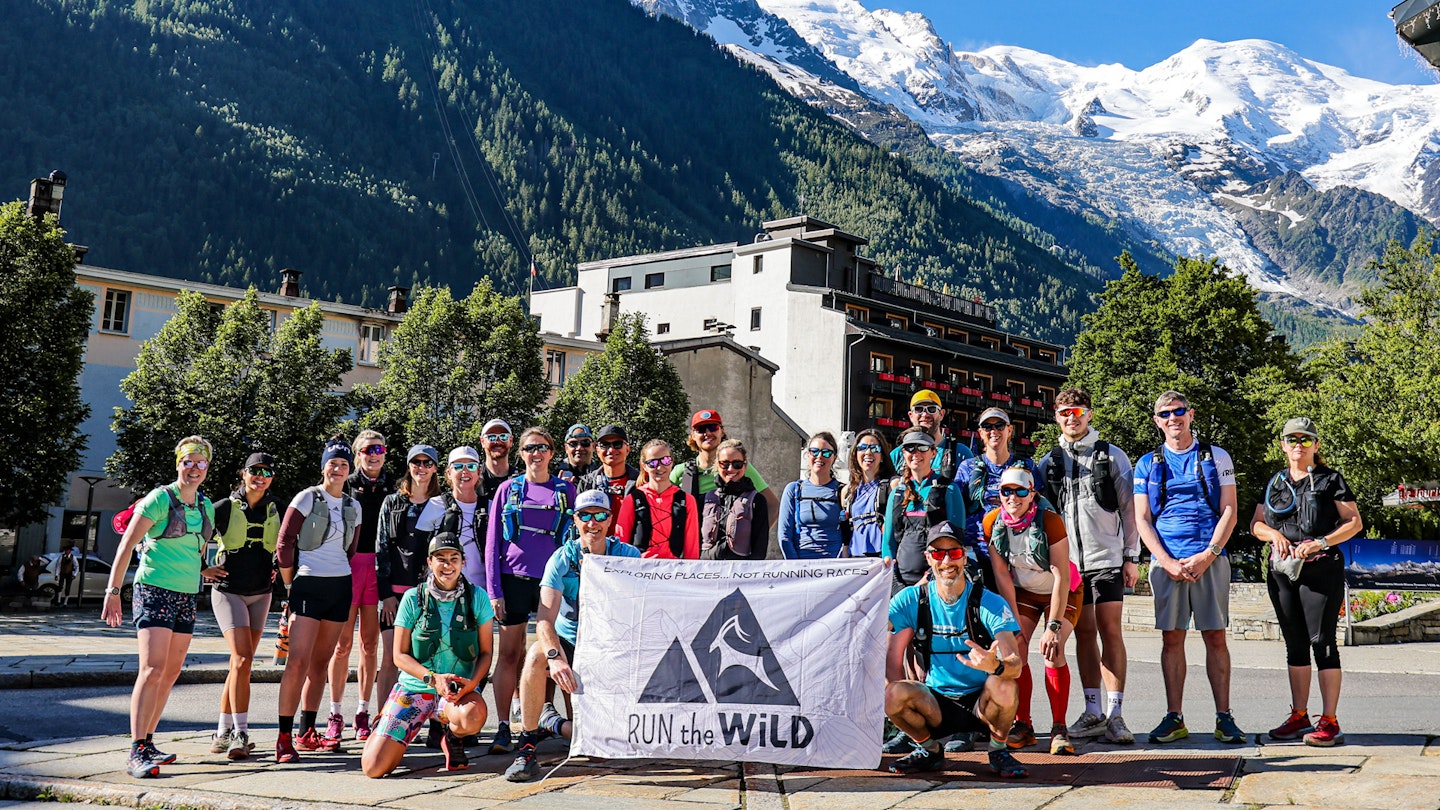
Looking back on my season in the Alps, I am aware that more and more people are finding mountain running for the first time. This is really amazing, the mountains are good for our souls and I’ve been trying to encourage more runners to find the mountains through Run the Wild. I love mountain running and share it evangelically with anyone who will listen. However, if you are new to mountain running, you probably have not yet developed your mountain sense. That’s ok, that’s why I am employed as a guide. However, as a guide I want to empower others to ensure they can safely enjoy these mountain trails whether as part of a Run the Wild running adventure or running a race.
Running in the mountains is one of the most exhilarating forms of trail running you can do, and I loved running the Wildstrubel, huge kudos to the organisers for adapting so many times to put on a safe event. Don’t be put off by the challenges, adapt and go prepared. Here are my key four takeaways for running, and racing in the Alps.
Kit
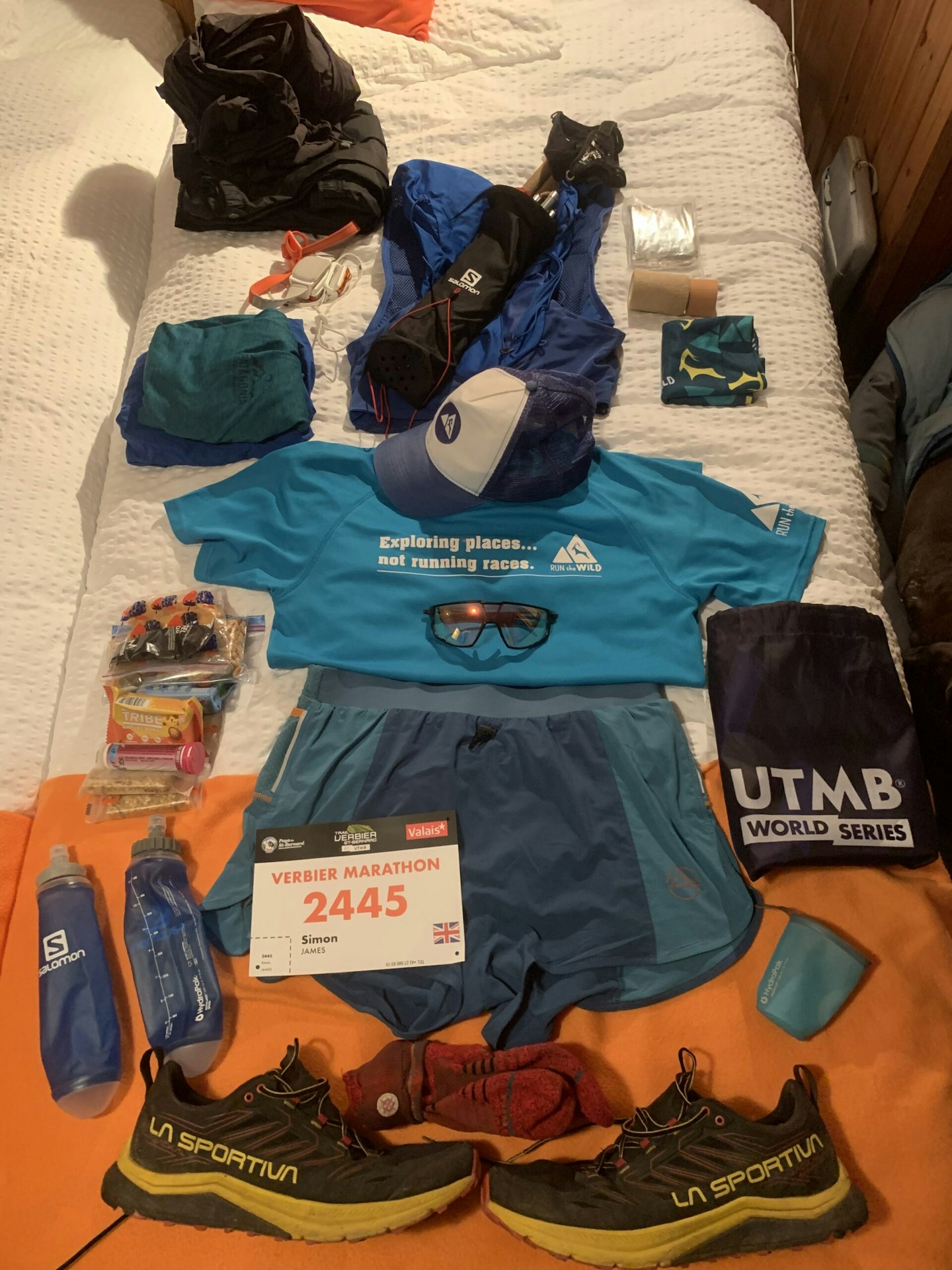
Invest in your kit. A lightweight waterproof jacket does not cut it in mountain torrential rain. Function vs lightweight is a fine balance but waterproofs for mountain running are not the same as one you would use during a Park Run. Go for a 2 layer or even 3 layer jacket. Make sure that any mandatory kit is practical, is your warm layer warm? Could you run with your spare head torch? And wear the correct trail shoes for the conditions under foot. Unless you want to be a swoosh.
Take responsibility
Just because you are in a race does not mean it is safe for you to continue. No race organiser can know what the weather will always be, nor can they know your level of
experience, skill or indeed what kit you are wearing. Remember mountain professionals make mistakes, and the mountains contain risks outside of our control, no one has perfect planning. If it feels dangerous, don’t be afraid to back away. Cold, wet, sleep deprivation and hunger impair both our physical movement but also our ability to make decisions and problem solve. The race will be there another year, make sure you are.
Weather and terrain
Check the weather forecast and look at the route in advance plus download it to your watch and phone. How high does it go? Look at it on Google Earth and reviews of the race. Does it look technical? If the weather looks bad, then there is a good chance it will be rerouted.
Be adaptable
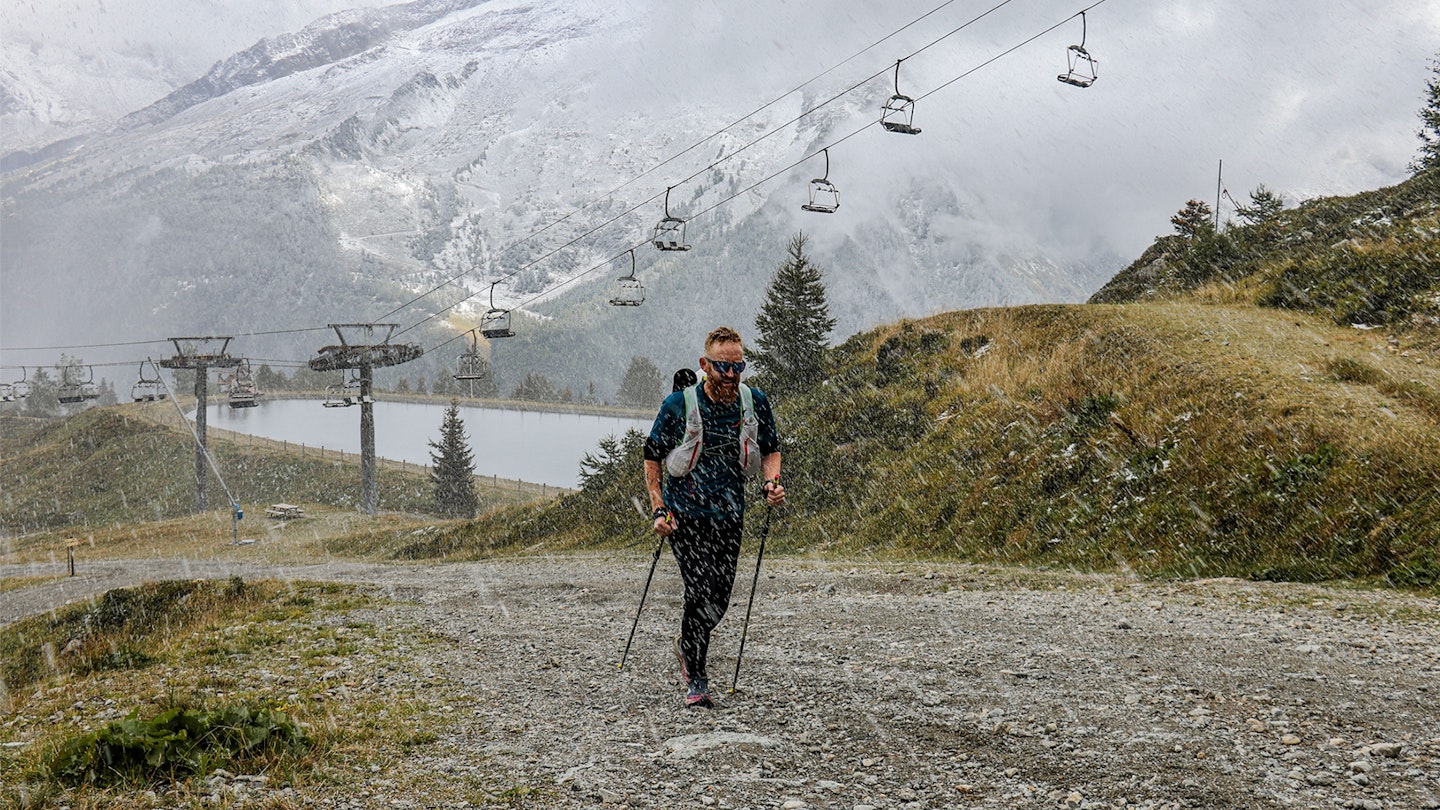
Climate change is affecting us all and is only going to get worse. Realistically being able to run in the mountains, and race, for sure is a first world problem and a privilege. Understand that race organisers will do their best to host an event, but it might have to change, a lot, for it to happen, if at all. Bear in mind that start and finish locations may change, even the day of the race.
Keep an eye on the race organiser’s Facebook and Instagram pages. Get insurance, be as flexible as you can with your plans, book accommodation at the start and end of the race and have some contingency plans. Whether your race goes ahead or not, be thankful that you are safe.
Run 1000 Miles this year

Every year, we host our annual Run 1000 Miles Challenge. It's one of our favourite ways to get people on the trails, and signing up gives you access to lots of benefits, including 15% off of all running gear at Sportsshoes.com.
So, for any of you who haven't already signed up to run 1000 miles this year, go for it and start your trail running journey. Then, don't forget to use your new discount on a pair of tough trail running shoes to take your running off-road for good.
Meet the expert
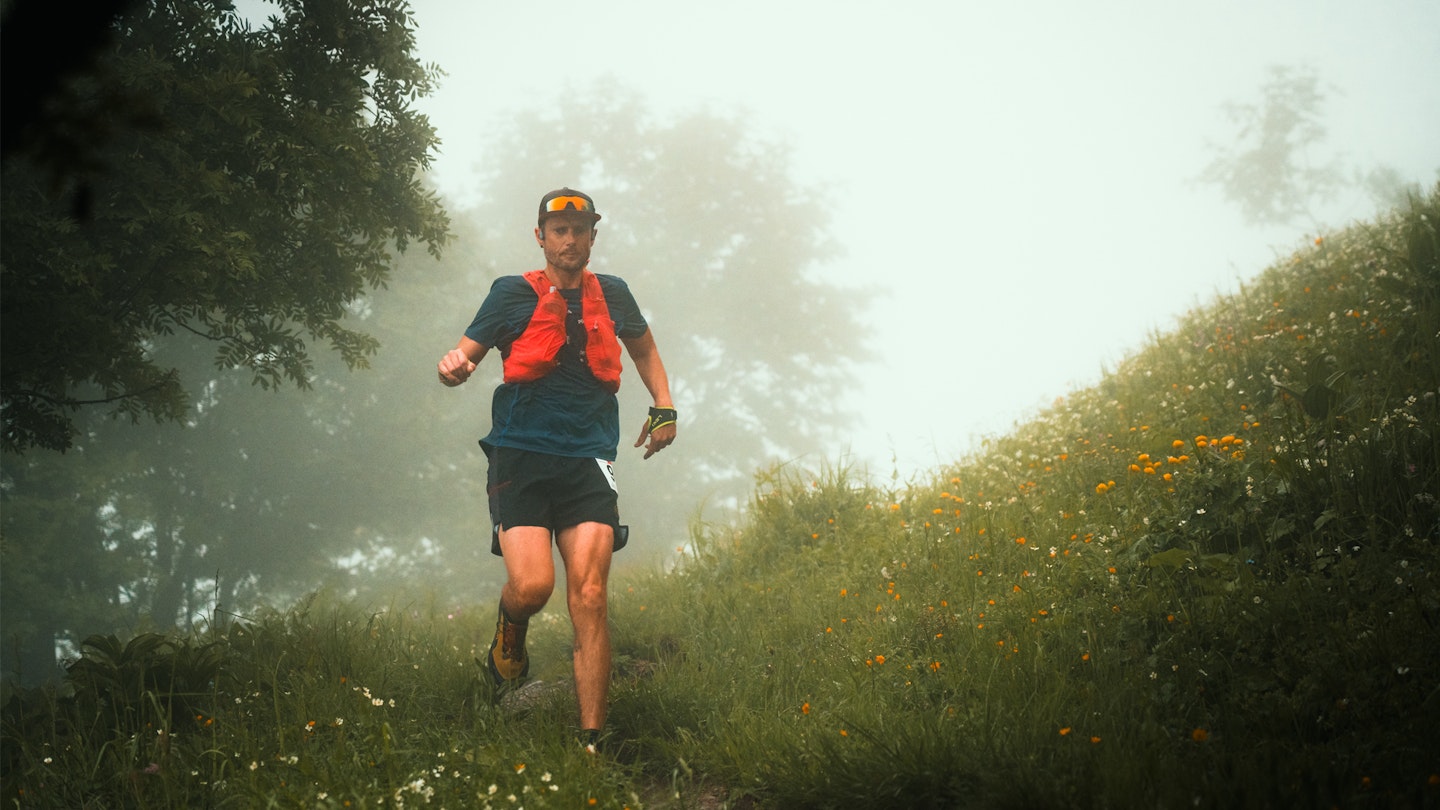
Simon James is an International Mountain Leader, Alpine Trail Running Guide and Running Coach sharing his time between the Alps around Mont Blanc and the Chilterns in the UK.
In 2013, he founded Run the Wild which was one of the first companies to offer scheduled guided trail running events. This was on the back of an expedition to an 8,000m peak in Nepal and completing the UTMB.
